Teaching “PRO” File – Andre Springs
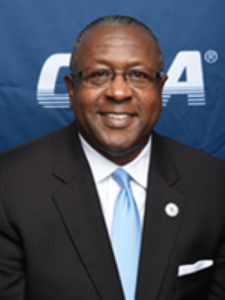 USGTF professional Andre Springs’ introduction to golf came when his uncle took him to the golf course in North Carolina to help him pick up range balls when a young Andre was just 5 years old. He remembers seeing how well dressed the golfers were and the fact that they appeared to have money, and that appealed to the youngster.
Springs wound up picking up range balls through his senior year in high school, as well as getting playing privileges and developing a great golf game. Although he was cut from his team in 8th grade, in 9th grade he not only made the team, but was the Most Valuable Player. He earned a scholarship to Fayetteville State University in Fayetteville, North Carolina. While there, he led his team to four Central Intercollegiate Athletic Association conference championships and earned NAIA all-American status.
His success led him to be named the head golf coach at Livingstone College in Salisbury, North Carolina, in 1979 at the age of 20. His first year, he dismissed everyone from the team except for one player, as most of the team did not take practice or the game seriously. Within a short time, Springs’ teams had won five conference championships and three national championships in the National Minority College Championship (now known as the PGA Works Collegiate Championship). He left to go to Cleveland, Ohio, where he became the first black general manager in the city’s golf course system, at Highland Park. He then moved back to his hometown in North Carolina, Charlotte, where he met Johnny Harris, owner and president of the famed Quail Hollow Golf Course. Harris was in the process of building a new course, Birkdale, and he offered Springs a job. When Birkdale opened, Springs caddied that day for Arnold Palmer, the course designer. Harris eventually named Springs the head teaching professional at Birkdale. And by the way, while there, Springs fired a 66 which established the course record.
Proving that life sometimes comes full circle, Springs was asked to once again coach the Livingstone golf program in 2010. He also became the school’s athletic director, a position he left in 2016. Today, his Livingstone golf team is ranked #1 in Division II among the Historically Black Colleges and Universities in the nation. Springs says he is lucky to have a president at the college who plays and appreciates golf and offers full support, and lists it as an important reason why he and his teams have been so successful at Livingstone.
USGTF professional Andre Springs’ introduction to golf came when his uncle took him to the golf course in North Carolina to help him pick up range balls when a young Andre was just 5 years old. He remembers seeing how well dressed the golfers were and the fact that they appeared to have money, and that appealed to the youngster.
Springs wound up picking up range balls through his senior year in high school, as well as getting playing privileges and developing a great golf game. Although he was cut from his team in 8th grade, in 9th grade he not only made the team, but was the Most Valuable Player. He earned a scholarship to Fayetteville State University in Fayetteville, North Carolina. While there, he led his team to four Central Intercollegiate Athletic Association conference championships and earned NAIA all-American status.
His success led him to be named the head golf coach at Livingstone College in Salisbury, North Carolina, in 1979 at the age of 20. His first year, he dismissed everyone from the team except for one player, as most of the team did not take practice or the game seriously. Within a short time, Springs’ teams had won five conference championships and three national championships in the National Minority College Championship (now known as the PGA Works Collegiate Championship). He left to go to Cleveland, Ohio, where he became the first black general manager in the city’s golf course system, at Highland Park. He then moved back to his hometown in North Carolina, Charlotte, where he met Johnny Harris, owner and president of the famed Quail Hollow Golf Course. Harris was in the process of building a new course, Birkdale, and he offered Springs a job. When Birkdale opened, Springs caddied that day for Arnold Palmer, the course designer. Harris eventually named Springs the head teaching professional at Birkdale. And by the way, while there, Springs fired a 66 which established the course record.
Proving that life sometimes comes full circle, Springs was asked to once again coach the Livingstone golf program in 2010. He also became the school’s athletic director, a position he left in 2016. Today, his Livingstone golf team is ranked #1 in Division II among the Historically Black Colleges and Universities in the nation. Springs says he is lucky to have a president at the college who plays and appreciates golf and offers full support, and lists it as an important reason why he and his teams have been so successful at Livingstone.



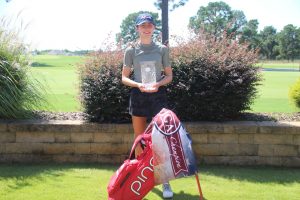 USGTF members teach players of all abilities, and some are teaching and coaching elite junior players. The place to play for the best junior players is with the American Junior Golf Association, better known as the AJGA. Most current PGA and American LPGA Tour players competed on this circuit, which is run very much like a professional tour. Tiger Woods, in his acceptance speech at his recent World Golf Hall of Fame induction ceremony, mentioned how his mom and dad took out a second mortgage on their home so a young Tiger could compete on the AJGA.
Today, golfers whose families lack the financial means to allow them to compete at this level may take advantage of the AJGA’s ACE Grant program. In order to compete on the circuit itself, players must be successful in other venues such as state, regional and national events in order to earn playing status with the AJGA, which is based on player merit. For more information on the AJGA, please visit
USGTF members teach players of all abilities, and some are teaching and coaching elite junior players. The place to play for the best junior players is with the American Junior Golf Association, better known as the AJGA. Most current PGA and American LPGA Tour players competed on this circuit, which is run very much like a professional tour. Tiger Woods, in his acceptance speech at his recent World Golf Hall of Fame induction ceremony, mentioned how his mom and dad took out a second mortgage on their home so a young Tiger could compete on the AJGA.
Today, golfers whose families lack the financial means to allow them to compete at this level may take advantage of the AJGA’s ACE Grant program. In order to compete on the circuit itself, players must be successful in other venues such as state, regional and national events in order to earn playing status with the AJGA, which is based on player merit. For more information on the AJGA, please visit 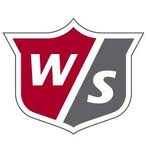 Wilson Golf, one of the oldest and most revered names in golf, has been an industry partner with the USGTF for almost three decades, and has been a trusted source for USGTF members to find and play quality equipment. The company is offering preferred pricing for all USGTF members. If you are interested in Wilson Golf products, please contact Mike Salvano at (800) 622-0444 ext. 6634 or
Wilson Golf, one of the oldest and most revered names in golf, has been an industry partner with the USGTF for almost three decades, and has been a trusted source for USGTF members to find and play quality equipment. The company is offering preferred pricing for all USGTF members. If you are interested in Wilson Golf products, please contact Mike Salvano at (800) 622-0444 ext. 6634 or 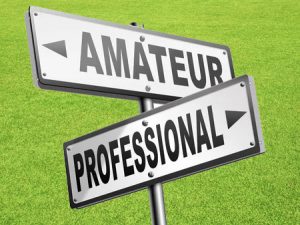 By: Mark Harman
When it comes to the difference between amateur and pro golfers, there isn’t one category that amateurs, as a whole, do better in than does a typical tour pro. But some differences are more glaring than others. And believe it or not, there are categories where amateurs are not that far away in comparison to a tour pro. So let’s highlight the good news first.
Driving accuracy. Every golf course has its share of “old-timers” who wear out fairways. In fact, statistical analyses show that scratch golfers actually hit a greater percentage of fairways than does a typical PGA Tour pro. This might be written off that this is because a pro golfer hits the ball farther and therefore the margin of error is less, and there is some validity to this, but pros also tend to play on fairways that have been firmed up for the week, leading to bounces that might go further sideways. Also, there is a tendency among tour pros these days, thanks to the analytics provided by statistical gurus such as Mark Broadie (Inventor of the strokes-gained metric), to play more aggressively since data show that aggressive play tends to be rewarded more than conservative play. But on the whole, there are indeed many amateur golfers who can hit a greater percentage of fairways than can an average tour pro.
Putting: Broadie’s statistics show that for every six strokes in difference in skill level, there is a one-stroke difference in putting prowess. In other words, a typical tour pro, who has a handicap index of approximately +6, putts only one stroke better per round than does a scratch golfer, two strokes better than a 6-handicapper, three strokes better than a 12-handicapper, etc. This means that yes, there are single-digit handicappers who putt as well as an average tour pro day in and day out. There are also probably some low double-digit handicappers who can put as well as the worst putters on the PGA Tour, and there are days that even 20-handicappers can putt as well as a tour pro. So the difference in putting isn’t all that great between the tour pro and good amateur golfers.
Now, let’s highlight the not-so-good news.
Distance. PGA Tour pros average approximately 296 yards off the tee. While it is a myth that “everyone” on tour can fly it 300 yards, the fact is that statistics show the average scratch golfer can drive the ball about 255 yards. This might seem low, but it has been well-founded in research. Remember, when we talk about average, we are talking about poor drives being thrown into the statistical mix, too. So it’s probable that the average male scratch golfer hits it about 265 or so on a good hit. There is about a 30-yard difference between what an average PGA Tour pro can do compared to a scratch golfer. That 30 yards times 14 drives adds up to a course that effectively plays 420 yards longer for a scratch golfer, not to mention longer clubs into the greens.
Greens in regulation. Studies have shown that an increase or decrease in one green in regulation, on average, equals to a difference of about two strokes on the scorecard. In other words, a golfer who averages 11 GIR will average about two strokes lower than someone who averages 10 GIR. A typical tour pro hits 12 greens in regulation, which translates into a scoring average of about one under par. Let’s say a scratch golfer typically plays on a course rated at 72.0, meaning he will average about 74 (because handicap indexes are based on the best 8 out of 20 rounds, a scratch golfer will typically average about two strokes worse than his handicap index). This means that on this course, assuming the par is 72, a scratch golfer will hit about 10.5 GIR. Skill level obviously plays a factor, but so does distance, as a +5 index golfer will have typically much shorter distances into the hole.
Short game. The average tour pro gets the ball up and down on a missed GIR just under 3 out of 5 times. Average amateur golfers will fare well less than this, even though their putting prowess may not be that far away from a tour pro’s. Their chips and pitches will usually not leave them in easy one-putt range, while the tour pro does this with regularity.
Mental approach. Most tour pros have consulted with or are working with a sports psychologist or other mental coach. Most amateur golfers don’t. When a tour pro hits a good shot, he or she typically affirms to themselves that this is normal for them, while amateurs often consider themselves “lucky” to pull off a good shot. Conversely, a tour pro recognizes that a bad shot is not normal for them, while most amateurs have a “yep, that’s me” outlook. While there are other differences, self-image between tour pros and amateurs tends to be like night and day.
One-way vs. two-way miss. When tour pros mishit a shot, they tend to hit it primarily either left or right. Amateurs tend to miss equally both ways, with the possible exception of slicers. Turning a two-way miss into a reliable one-way miss is one of the fastest ways to cut a few shots off an amateur’s score. This is where competent instruction becomes critical. The aim of a good lesson is obviously to make the player a better ball striker, but part of that means developing a reliable miss so that strategy can be effectively planned.
Time. Since it’s their job, tour pros can literally spend all day, if they desire, playing and practicing golf. Most amateurs do not have this luxury, and if they do, they have neither the energy or motivation to do so. Besides developing a reliable one-way miss, one of the surest ways to get better at golf is simply to do it more.
So, there you have the reasons why an amateur doesn’t do as well as a pro, and we didn’t even mention talent. Talent obviously plays a role, but that’s really something that cannot be controlled. Amateurs, however, have tools to close the gaps that differentiate themselves from tour pros, and competent instruction from any USGTF member is a good way to start.
By: Mark Harman
When it comes to the difference between amateur and pro golfers, there isn’t one category that amateurs, as a whole, do better in than does a typical tour pro. But some differences are more glaring than others. And believe it or not, there are categories where amateurs are not that far away in comparison to a tour pro. So let’s highlight the good news first.
Driving accuracy. Every golf course has its share of “old-timers” who wear out fairways. In fact, statistical analyses show that scratch golfers actually hit a greater percentage of fairways than does a typical PGA Tour pro. This might be written off that this is because a pro golfer hits the ball farther and therefore the margin of error is less, and there is some validity to this, but pros also tend to play on fairways that have been firmed up for the week, leading to bounces that might go further sideways. Also, there is a tendency among tour pros these days, thanks to the analytics provided by statistical gurus such as Mark Broadie (Inventor of the strokes-gained metric), to play more aggressively since data show that aggressive play tends to be rewarded more than conservative play. But on the whole, there are indeed many amateur golfers who can hit a greater percentage of fairways than can an average tour pro.
Putting: Broadie’s statistics show that for every six strokes in difference in skill level, there is a one-stroke difference in putting prowess. In other words, a typical tour pro, who has a handicap index of approximately +6, putts only one stroke better per round than does a scratch golfer, two strokes better than a 6-handicapper, three strokes better than a 12-handicapper, etc. This means that yes, there are single-digit handicappers who putt as well as an average tour pro day in and day out. There are also probably some low double-digit handicappers who can put as well as the worst putters on the PGA Tour, and there are days that even 20-handicappers can putt as well as a tour pro. So the difference in putting isn’t all that great between the tour pro and good amateur golfers.
Now, let’s highlight the not-so-good news.
Distance. PGA Tour pros average approximately 296 yards off the tee. While it is a myth that “everyone” on tour can fly it 300 yards, the fact is that statistics show the average scratch golfer can drive the ball about 255 yards. This might seem low, but it has been well-founded in research. Remember, when we talk about average, we are talking about poor drives being thrown into the statistical mix, too. So it’s probable that the average male scratch golfer hits it about 265 or so on a good hit. There is about a 30-yard difference between what an average PGA Tour pro can do compared to a scratch golfer. That 30 yards times 14 drives adds up to a course that effectively plays 420 yards longer for a scratch golfer, not to mention longer clubs into the greens.
Greens in regulation. Studies have shown that an increase or decrease in one green in regulation, on average, equals to a difference of about two strokes on the scorecard. In other words, a golfer who averages 11 GIR will average about two strokes lower than someone who averages 10 GIR. A typical tour pro hits 12 greens in regulation, which translates into a scoring average of about one under par. Let’s say a scratch golfer typically plays on a course rated at 72.0, meaning he will average about 74 (because handicap indexes are based on the best 8 out of 20 rounds, a scratch golfer will typically average about two strokes worse than his handicap index). This means that on this course, assuming the par is 72, a scratch golfer will hit about 10.5 GIR. Skill level obviously plays a factor, but so does distance, as a +5 index golfer will have typically much shorter distances into the hole.
Short game. The average tour pro gets the ball up and down on a missed GIR just under 3 out of 5 times. Average amateur golfers will fare well less than this, even though their putting prowess may not be that far away from a tour pro’s. Their chips and pitches will usually not leave them in easy one-putt range, while the tour pro does this with regularity.
Mental approach. Most tour pros have consulted with or are working with a sports psychologist or other mental coach. Most amateur golfers don’t. When a tour pro hits a good shot, he or she typically affirms to themselves that this is normal for them, while amateurs often consider themselves “lucky” to pull off a good shot. Conversely, a tour pro recognizes that a bad shot is not normal for them, while most amateurs have a “yep, that’s me” outlook. While there are other differences, self-image between tour pros and amateurs tends to be like night and day.
One-way vs. two-way miss. When tour pros mishit a shot, they tend to hit it primarily either left or right. Amateurs tend to miss equally both ways, with the possible exception of slicers. Turning a two-way miss into a reliable one-way miss is one of the fastest ways to cut a few shots off an amateur’s score. This is where competent instruction becomes critical. The aim of a good lesson is obviously to make the player a better ball striker, but part of that means developing a reliable miss so that strategy can be effectively planned.
Time. Since it’s their job, tour pros can literally spend all day, if they desire, playing and practicing golf. Most amateurs do not have this luxury, and if they do, they have neither the energy or motivation to do so. Besides developing a reliable one-way miss, one of the surest ways to get better at golf is simply to do it more.
So, there you have the reasons why an amateur doesn’t do as well as a pro, and we didn’t even mention talent. Talent obviously plays a role, but that’s really something that cannot be controlled. Amateurs, however, have tools to close the gaps that differentiate themselves from tour pros, and competent instruction from any USGTF member is a good way to start.
 Our neighbor to the north, Canada, has the misfortune to have a shorter season than those of us in the United States, but the high quality of the courses more than makes up for any perceived lack of playing time! World-class venues abound in all provinces, and the Canadian Golf Teachers Federation has members in each province making their mark on the golf teaching industry. The CGTF’s online courses have proven to be extremely popular. More information on the CGTF can be found at
Our neighbor to the north, Canada, has the misfortune to have a shorter season than those of us in the United States, but the high quality of the courses more than makes up for any perceived lack of playing time! World-class venues abound in all provinces, and the Canadian Golf Teachers Federation has members in each province making their mark on the golf teaching industry. The CGTF’s online courses have proven to be extremely popular. More information on the CGTF can be found at 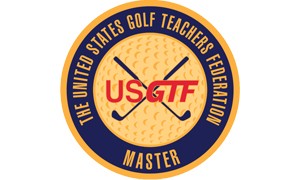 The Master Golf Teaching Professional® designation is the highest one can achieve in the USGTF. Classes will be held June 13-15 in Las Vegas, Nevada, and November 14-16 in Fort Pierce, Florida. The classes are open to all Certified Golf Teaching Professionals® in good standing who have been certified for a minimum of 12 months. Attending one of these certification classes is extremely educational for all involved, and successfully attaining the designation has proven to be a boon for many who have earned the Master title. More information can be obtained by calling the USGTF National Office at (772) 88-USGTF.
The Master Golf Teaching Professional® designation is the highest one can achieve in the USGTF. Classes will be held June 13-15 in Las Vegas, Nevada, and November 14-16 in Fort Pierce, Florida. The classes are open to all Certified Golf Teaching Professionals® in good standing who have been certified for a minimum of 12 months. Attending one of these certification classes is extremely educational for all involved, and successfully attaining the designation has proven to be a boon for many who have earned the Master title. More information can be obtained by calling the USGTF National Office at (772) 88-USGTF. 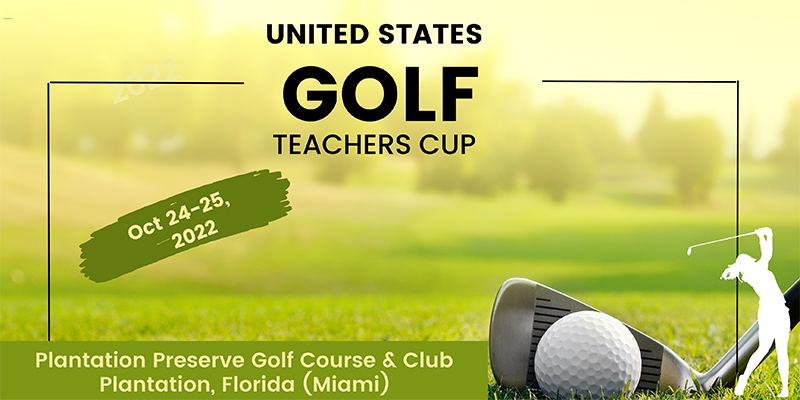 Plantation Preserve Golf Course and Club in Plantation, Florida, will host the 26th annual United States Golf Teachers Cup on Monday and Tuesday, October 24-25, 2022. The course is one of the finest public facilities in the South Florida area and is situated just west of Fort Lauderdale. More information will be made available soon. Please consult our monthly e-newsletters or
Plantation Preserve Golf Course and Club in Plantation, Florida, will host the 26th annual United States Golf Teachers Cup on Monday and Tuesday, October 24-25, 2022. The course is one of the finest public facilities in the South Florida area and is situated just west of Fort Lauderdale. More information will be made available soon. Please consult our monthly e-newsletters or